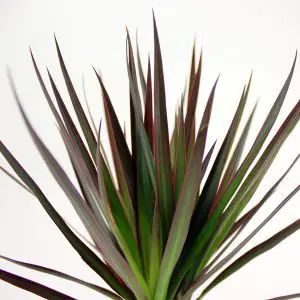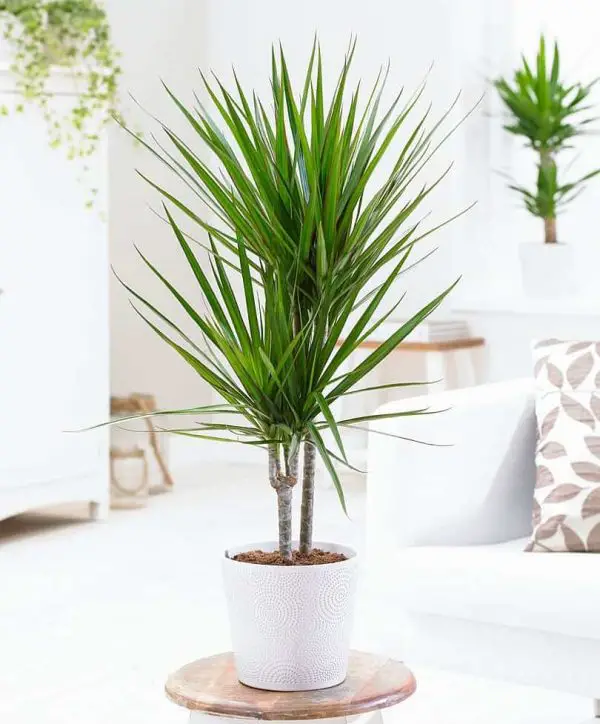Dracaena marginata
(Madagascar dragon tree)
Care Guide
Are you looking for a tree-shaped plant for your home or office? Preferably one which is durable and easy to grow? And which will clean the air of toxins at the same time? If this is the case then the ideal plant for you will be the Madagascar dragon tree (dracaena marginata) – the most popular and widely known of the dracaenas.
Care
Growing dracaena marginata should not present any difficulties to you. Apart from its obvious beauty, it is precisely its durability and the ease with which it is grown that make the plant so commonly encountered in banks, offices or shopping centres.
The most important thing is the appropriate amount of watering – the dragon tree should not stay in water but the soil should also not be allowed to dry up completely before the next watering. In the first case the roots of the plant will start to rot and the plant can shrivel and die very fast, and in the second the tips of the leaves will start to yellow. I would like to add here that you can minimize the risk of having dry tips to the leaves by ensuring the plant is kept in a humid atmosphere – it is enough for you to sprinkle it with water from time to time, or to put it alongside other plants.
The lower leaves of dracaena sometimes yellow and drop off exposing the stem, which then hardens with time. This is a completely normal situation. If the naked trunk is too long, you can trim the dracaena to any chosen height – after some time it will sprout new leaves from the place it was cut. You can also cut the dracaena to cause it to branch out.

Another important thing is having suitable lighting. In many places you can come across the opinion that dracaena marginata can survive in weakly lit places. And it is true to some extent, but only in so far as such conditions will not allow its beauty to develop fully. In a poorly lit place the flower will usually stop growing and its leaves become short, start to darken and sag. If you want your marginata to look really impressive, put it in a well lit place. This is especially important in the case of the cultivar “tricolor”, which is more sensitive to weak lighting conditions.
As far as the dracaena is concerned, you do not particularly have to worry about fertilizing it. It grows rather slowly (a few centimetres a year), so it is enough if you repot it every 1-2 years for it to have enough nutrients.
You do not need to worry about pests either, because they very rarely choose it as a target, especially when the conditions it lives in are favourable.
You will find a lot of general information about the care of potted flowers in the post “The basics of house plant care”.
Appearance
Dracaena marginata is a tree with a thin trunk and grey erect canes growing out of it. It can reach a max height of 2m. A cluster of thin (about 1cm) and long (about 0.5cm) leaves will grow at the top of each cane. The slightly glossy leaves are dark green in colour and have thin reddish edges. The cultivar “Tricolor” (known also as “rainbow tree”) is characterised by brighter leaves with pink edges and cream and green stripes in the middle.


Origin
There are more than 40 species of dracaenas. The cultivar “marginata” comes from Madagascar.
The name “dracaena” is derived from the greek word “drakaina” which means “female dragon,” and that is why it is commonly referred to as the dragon tree.
Propagation
You can most simply propagate Draceana marginata with tip cuttings or stem cuttings.

